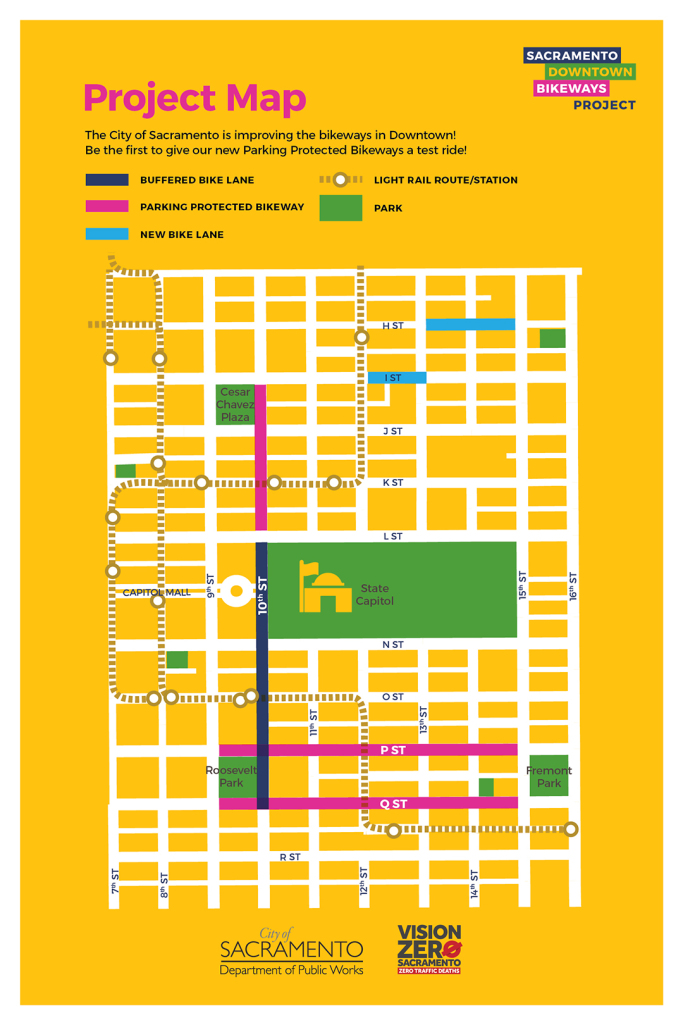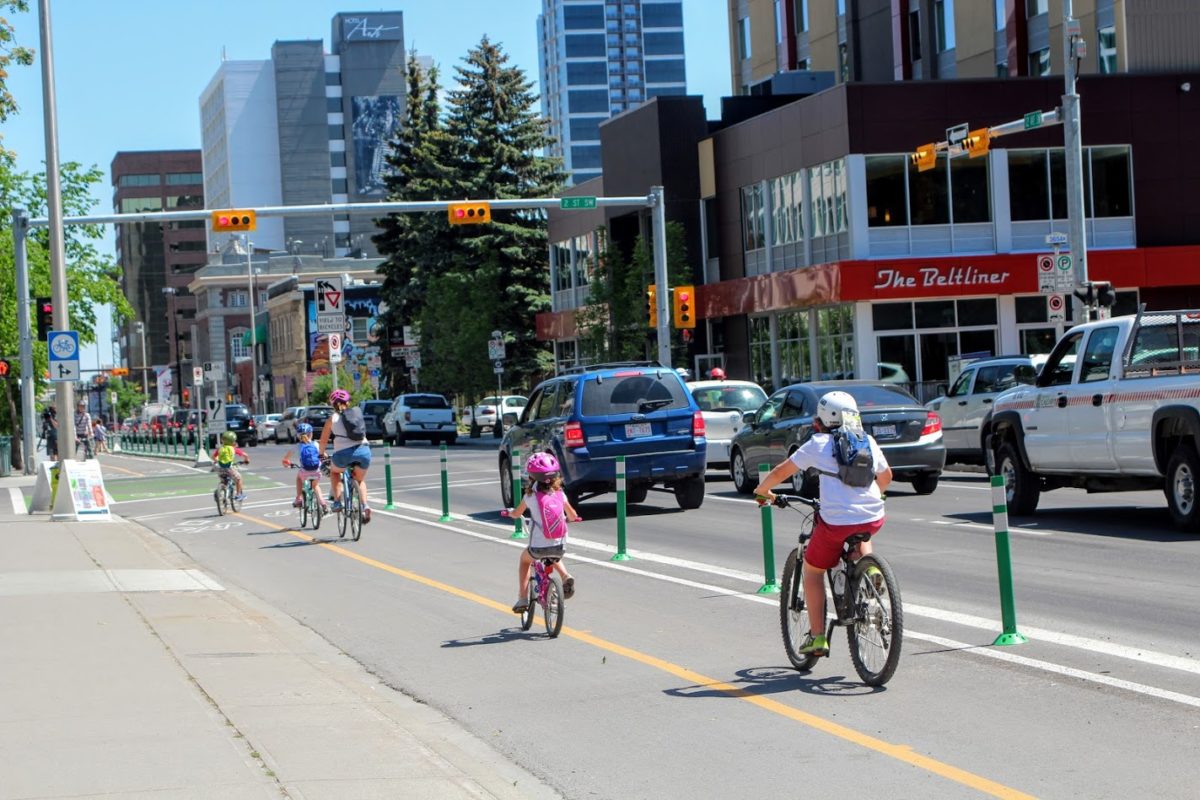Sacramento’s first protected bikeways (also sometimes called protected bike lanes, cycle tracks or separated bikeways) are being installed on three downtown streets and we’re hearing a lot of questions. This is the first of several blog posts where we’ll explain more about this kind of bike infrastructure.
May 1 is the start of our region’s annual month-long celebration of all things bicycle, with rides, classes, events and promotions meant to encourage more people to choose a bike for everyday travel.
 Public agencies like to use this month to unveil new improvements and programs that support bicycle transportation. For example, in a few weeks the City of Sacramento will open 20 blocks of buffered and protected bike lanes (AKA separated bikeways or cycle tracks) on three downtown streets.
Public agencies like to use this month to unveil new improvements and programs that support bicycle transportation. For example, in a few weeks the City of Sacramento will open 20 blocks of buffered and protected bike lanes (AKA separated bikeways or cycle tracks) on three downtown streets.

Many people who already ride a bike recognize the benefits and feel validated by such improvements. Yet the real beneficiaries aren’t even on a bike yet.
For every person currently riding a bike, there are as many as five drivers who say they want to ride a bike for transportation but won’t do it on streets where they have to ride with traffic. These interested but concerned would-be cyclists are waiting for less stressful conditions – off-street paths and bike lanes comfortably separated from moving vehicles.
Six years ago researchers working with San Jose State’s Mineta Transportation Institute published a groundbreaking methodology for creating continuous, low-stress bikeways meant to accommodate the interested but concerned cyclist.
By sorting streets according to their level of “traffic stress” — based on factors such as size, vehicle speed and traffic volumes — it’s possible to identify those that are naturally calm and those that need to be tamed. Potential networks, including gaps to be filled, reveal themselves easily.
Their research changed the way cities think about bikeway networks and how to design for all ages and abilities. Low-stress bikeways became the gold standard in bikeway design. Dutch-style designs, such as buffered and protected bike lanes, became potent tools for reducing the level of traffic stress on streets that are challenging for people on bikes.

Anyone who regularly travels by bike in our region encounters big disconnects: the bike lanes that just end, the white-knuckle ride on the busy streets and boulevards that clearly weren’t designed for people on bikes. Imagine a trip by bike without those gaps and without facing a limited number of poor options for traveling safely. That’s what you get with a low-traffic-stress bikeway network.
Now do the math. If we created bikeways that enabled even 20% of the interested but concerned to choose a bike over driving, we would immediately double the number of people traveling by bikes, with a corresponding drop in traffic and thus air pollution related to transportation. An increase in bike traffic also means fewer traffic deaths and injuries of all kinds.
Sounds like a dream? The Canadian city of Calgary installed nearly 3 miles of protected bike lanes in its downtown grid and within the first three months saw a 95% increase in the number of bicyclists on those streets compared to the year before. A study released last year in Seattle showed the highest rates of bicycling near the calmest facilities, including bike paths and protected bike lanes.

As you ride around our region this month, look around and ask yourself who you don’t see riding there. They’re the ones we’re building for.
Support our work to enable more people to choose to a bike as safe, convenient everyday transportation with a generous donation on Thursday, May 3, the Big Day of Giving.

